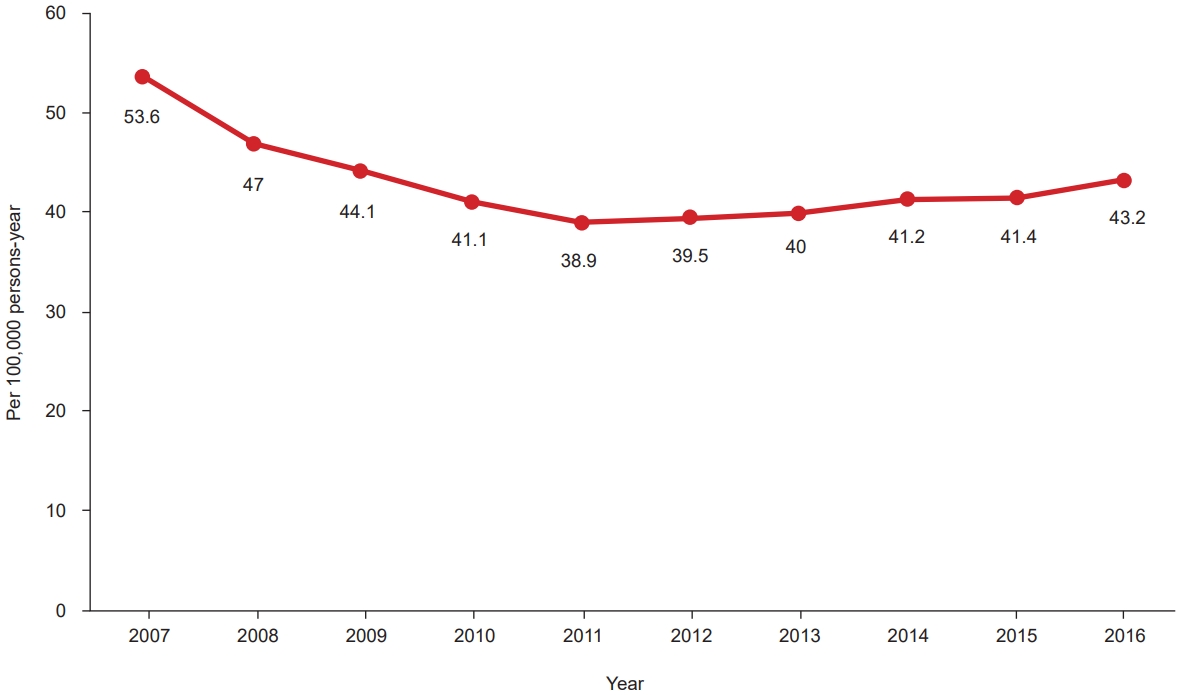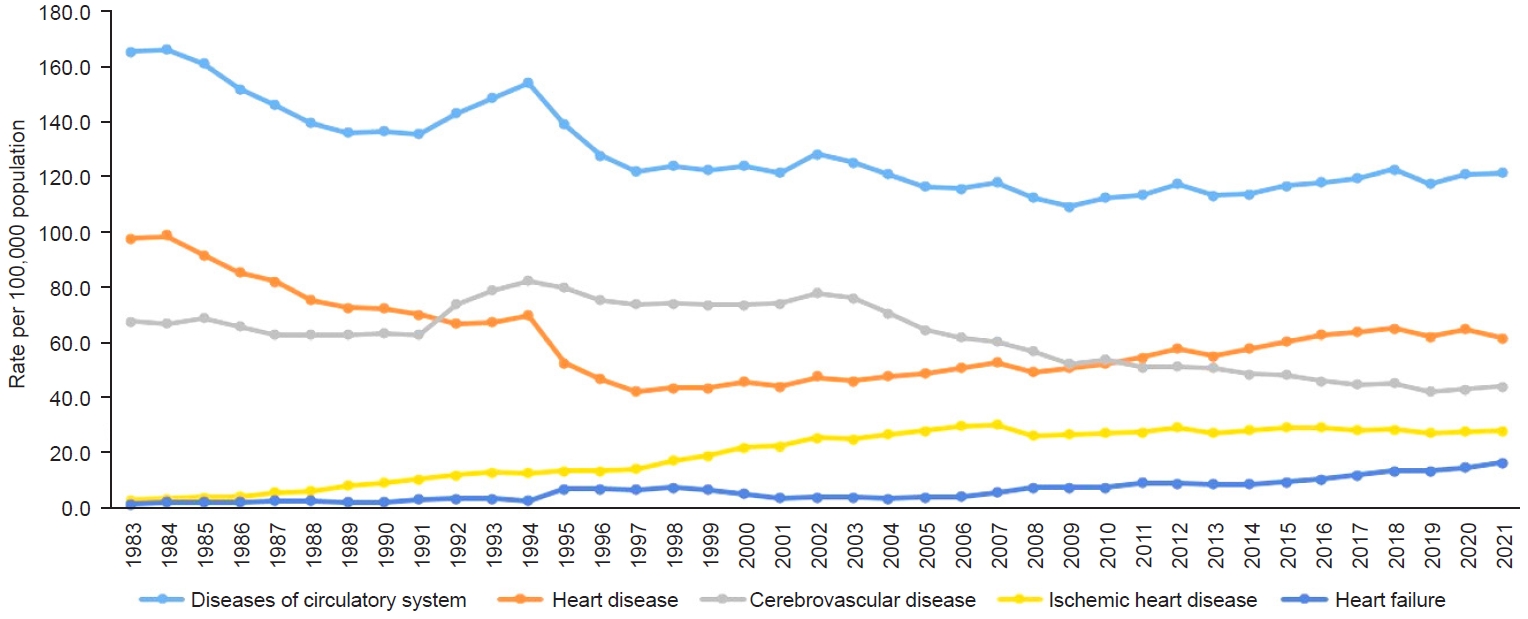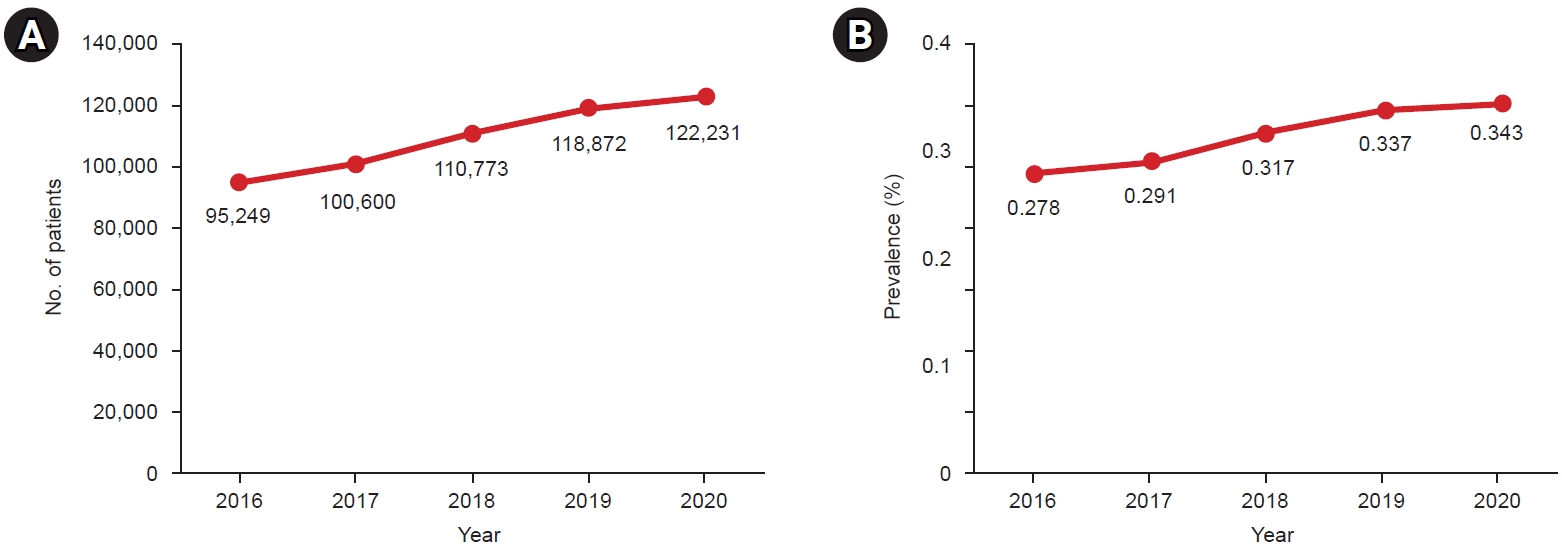- Search
| Ann Rehabil Med > Volume 47(5); 2023 > Article |
|
Abstract
CONFLICTS OF INTEREST
Jae-Young Han is an Editorial Board member of Annals of Rehabilitation Medicine. The author did not engage in any part of the review and decision-making process for this manuscript. Otherwise, no potential conflict of interest relevant to this article was reported.
AUTHOR CONTRIBUTION
Conceptualization: Han JY. Methodology: Kim KH. Formal analysis: Kim KH. Writing – original draft: Kim KH. Writing – review and editing: Han JY. Approval of final manuscript: all authors.
Fig. 1.

Fig. 2.

Fig. 3.

Table 1.
Adapted from the article of Kim et al. (J Clin Med 2021;10:5079) [19].
RCC, regional cardiocerebrovascular center; PCI, percutaneous coronary intervention; CR, cardiac rehabilitation.
a)Province or metropolitan area.
b)Hospitals that perform PCI.
c)Hospitals with CR programs in the region.
d)An RCC was established in the Jeonnam region in 2020 but was not included in the 2021 study.
e)An RCC was established in the Gyeongbuk region in 2020 but was not included in the 2021 study.
Table 2.
Table 3.
AMI, acute myocardial infarction; RCC, regional cardiocerebrovascular center; CR, cardiac rehabilitation.
a)Annual number of AMI admissions for each RCC.
b)Annual number of CR candidates among AMI admissions at each RCC.
c)Median number of patients each RCC can serve per year.
d)CR candidates divided by CR capacity for each RCC.
REFERENCES
- TOOLS
-
METRICS

-
- 0 Crossref
- Scopus
- 1,772 View
- 34 Download
- Related articles in ARM
-
Cancer Rehabilitation Fact Sheet in Korea2022 August;46(4)
Recent Trends in Rehabilitation for Cancer Patients2022 June;46(3)
Correction: Stroke Rehabilitation Fact Sheet in Korea2022 April;46(2)
Stroke Rehabilitation Fact Sheet in Korea2022 February;46(1)






